





 |

Angola is heavily contaminated with landmines and explosive remnants of war (ERW), including cluster munition remnants. Contamination is the result of more than four decades of armed conflict which ended in 2002. Angola has more than 92km2 (22,734 acres) of contaminated land consisting of confirmed and suspected hazardous areas with landmines along with a significant UXO problem. All 18 provinces are affected although much of the remaining contamination is located the two provinces of Moxico and Kunene.
US Humanitarian Demining Research and Development (HD R&D) Program demining equipment currently employed in Angola are the REX multi-tool reach in demining system and the Minehound Lite handheld mine detector. An operational field evaluation of the Handheld Standoff Mine Detection System (HSTAMIDS) concluded in late 2018. These technologies have cleared a combined total 1,262 mines from 1,819,2217 square meters of land to date.
Sources: To Walk the Earth in Safety, 2023
Landmine Monitor Report, 2020
|
|
ROTARY MINE COMB |
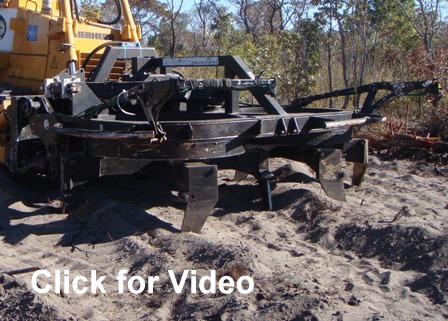
|
The Rotary Mine Comb is an innovative tool capable of gently extricating buried objects from the soil and pushing them to the side of the host vehicle`s path. The comb`s two rotors each contain four soil-engaging tines that intermesh and counter-rotate as the vehicle travels forward. The tines lift and continuously nudge large objects, including anti-tank mines, from the path of the vehicle to the outside edge for neutralization without creating a large berm.
Distribution Statement A: Approved for public release.




PARTNERS: The HALO Trust - Afghanistan, Angola (2008-2013)
|
|
REX |
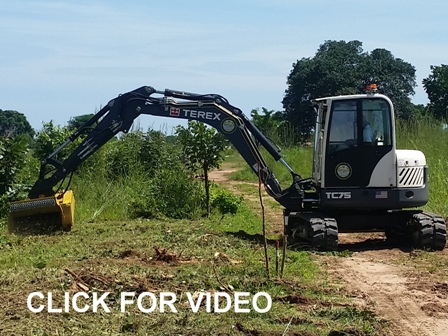
|
Remote controlled excavators are sometimes required when it is too dangerous for manual operation. The Rex is a versatile, light weight (8 ton class) armored excavator designed to clear vegetation, obstacles, and mechanically remove and neutralize anti-personnel (AP) landmines and unexploded ordnance (UXO). The HD R&D Program developed and integrated two important modifications to the commercial Terex TC75 excavator to create the Rex. These are the addition of remote control capability, and armor protection for the operator when the system is manually operated. Small platform based system advantages are lightweight, versatile and fuel efficient.
Distribution Statement A: Approved for public release.



PARTNERS: Mines Advisory Group - Angola, Cambodia (2011-2014), Sri Lanka; The HALO Trust - Sri Lanka
|
|
Multi-tool Attachments |
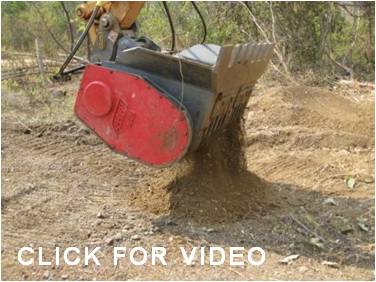
|
The Humanitarian Demining Research and Development (HD R&D) Program has developed a wide variety of excavator and loader based tools for mechanical mine clearance. These attachments give deminers the capability to perform area preparation, technical survey and mine clearance from a safe area. Tools that have proven useful include vegetation cutters, grapples, tillers, and buckets for sifting, grinding, and crushing. The HD R&D Program has modified several small, medium and large class excavators with armor protection and the interfaces needed to use these tools in various demining environments. Operational Field Evaluations (OFE) can be performed with HD R&D Program developed excavators or loaders, or with just the tools mounted to the demining organization`s own host equipment.
Distribution Statement A: Approved for public release.



PARTNERS: Mines Advisory Group; Golden West Humanitarian Foundation; The HALO Trust
|
|
Long Handle Tools |
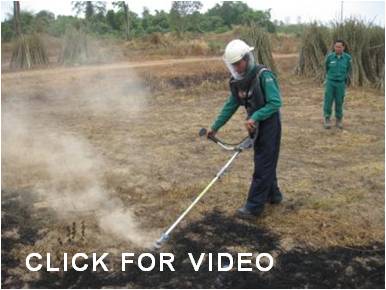
|
Long handled power tools increase the manual deminers speed, efficiency, and safety. To date, operational field evaluations have taken place in Cambodia, Ecuador and Angola.
Distribution Statement A: Approved for public release.



PARTNERS: The HALO Trust - Cambodia; Mines Advisory Group - Cambodia; Ecuadorian Army - Ecuador (2009-2012)
|
|
HSTAMIDS |
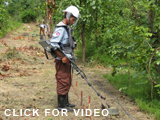
|
The Handheld Standoff Mine Detection System (HSTAMIDS) is the U.S. Army`s AN/PSS-14 dual sensor, handheld mine detector that combines an electromagnetic induction sensor and ground penetrating radar (GPR) to detect landmines. The addition of the GPR significantly reduces the detector`s false alarm rate and the time the operator spends investigating clutter, increasing the operator`s speed and effectiveness. The HD R&D program also developed the HSTAMIDS F3S variant which incorporates a more sensitive metal detector to improve performance against deeply buried low metal anti-personnel and anti-tank mines.
Distribution Statement A: Approved for public release.



PARTNERS: The Halo Trust in Afghanistan, Cambodia, Mozambique (2012-2014), Kosovo,Sri Lanka and Zimbabwe; Mines Advisory Group in Angloa and Cambodia; Cambodia Mine Action Centre (2009-2010); Norwegian Peoples Aid in Zimbabwe (2014-2016)
|
|
Minehound |
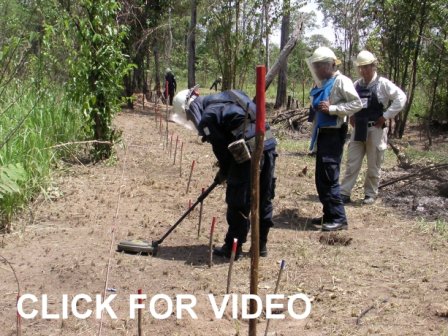
|
Minehound is a commercially available dual sensor handheld detector that uses ground penetrating radar (GPR) and metal detection technology to locate landmines, unexploded ordnance (UXO) and improvised explosive devices (IED). The GPR can be operated independently which gives Minehound the ability to detect deeper buried, low metallic threats. The GPR audio tone provides information on the size and depth of the object it detects. Twenty frequencies are available to the metal detection sub-system, which allows the Minehound to be operated in close proximity to other detectors and near power lines without causing or being subject to interference. The metal detector also compensates for water and mineralized soil without reducing sensitivity.
Distribution Statement A: Approved for public release.



PARTNERS: The HALO Trust - Afghanistan, Angola (2012-2015), Cambodia (2012-2017); MAG - Iraq (Mar-Oct 2017)
|
|
Target Reacquisition Positioning System (TRPS) |
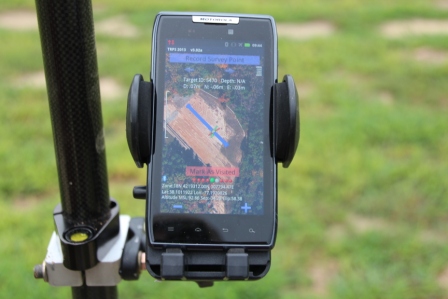
|
The Target Reacquisition Positioning System (TRPS) is a dual-purpose, target reacquisition and survey tool. TRPS is a lightweight, low-cost and highly accurate system that simplifies the use of Differential Global Positioning System (DGPS) for reacquiring ground target positions previously identified UXO detection systems. TRPS is also a surveying tool that provides the ability to quickly survey boundaries, locations of items found, or mark other points of interest with centimeter level accuracy.
The Minefield Management Tool provides real-time data logging capabilities for demining managers. Modules provide mapping, survey, equipment, target/data, incident and personnel management capabilities.
Distribution Statement A: Approved for public release.


PARTNERS: The HALO Trust - Angola (2012-2015), West Bank; Mines Advisory Group - Bosnia-Herzegovina, Cambodia
|
|
    
|
|

